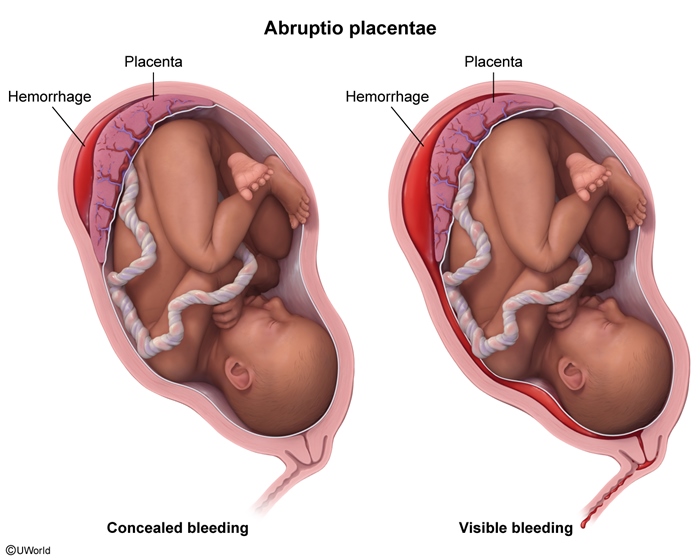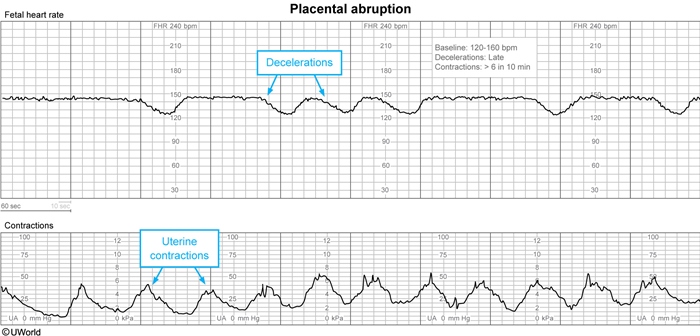Abruptio Placentae (Placental Abruption)
Article Sections
Introduction
Placental abruption (abruptio placentae) is the partial or complete detachment of the placenta (Figure 1) from the uterus before fetal delivery. Patients typically have painful vaginal bleeding; a tender, rigid uterus; and fetal heart rate abnormalities.
Pathophysiology and risk factors
The cause of placental abruption is the rupture of maternal placental vessels (arterial or venous) in the decidua basalis where the placenta attaches to the uterus. Bleeding along this uteroplacental interface lifts and separates the placenta from the uterine wall. Vaginal bleeding is typically present, but occasionally the accumulated blood is trapped (ie, concealed abruption (Figure 2)) between the fetal membranes and the decidua basalis.
Placental abruption most commonly presents with an acute presentation (eg, rapid, severe hemorrhage), but chronic placental abruptions can occur (eg, intermittent, minimal to moderate bleeding).
Continue Learning with UWorld
Get the full Abruptio Placentae (Placental Abruption) article plus rich visuals, real-world cases, and in-depth insights from medical experts, all available through the UWorld Medical Library.
Figures


